Apollo 13 in Concert Benjamin Marian Schuster Performing Arts Center September 7
Apollo thirteen: Facts about NASA's near-disaster moon mission
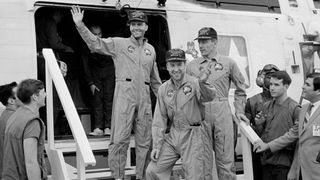
Apollo 13 was NASA's third moon-landing mission, simply the astronauts never fabricated information technology to the lunar surface.
During the mission's dramatic serial of events, an oxygen tank explosion nearly 56 hours into the flight forced the crew to carelessness all thoughts of reaching the moon. The spacecraft was damaged, but the crew was able to seek cramped shelter in the lunar module for the trip back to World, earlier returning to the command module for an uncomfortable splashdown.
The mission stands today every bit an instance of the dangers of space travel and of NASA'due south innovative minds working together to salvage lives on the wing. The Apollo 13 mission celebrated its 50th ceremony on Apr 11 2020.
Related: NASA's moonwalking Apollo astronauts: Where are they at present?
Apollo 13 crew
The Apollo 13 astronauts were commander James Lovell, lunar module pilot Fred Haise, and command module pilot John "Jack" Swigert.
At age 42, Lovell was the earth's about traveled astronaut when he joined the Apollo 13 mission, with three missions and 572 spaceflight hours nether his belt. Lovell participated in Apollo eight, the first mission to circle the moon, and flew two Gemini missions — including a 14-solar day endurance run.
Prior to the Apollo 13 mission, 36 year-onetime Haise served equally the fill-in lunar module pilot for the Apollo 8 and Apollo 11 missions. Haise was a fighter airplane pilot in the U.S. Marine Corps before joining NASA as a exam pilot. He was selected for the manned infinite program in 1966, at the same time every bit Swigert. Apollo 13 was Haise's only trip to space.
Apollo 13 was Swigert's kickoff trip to space, at historic period 38. He had been part of the support coiffure for Apollo seven and was initially Apollo 13'southward backup command module pilot. He was asked to bring together the crew 48 hours before launch fourth dimension after the original control module pilot, Ken Mattingly, was exposed to German measles.
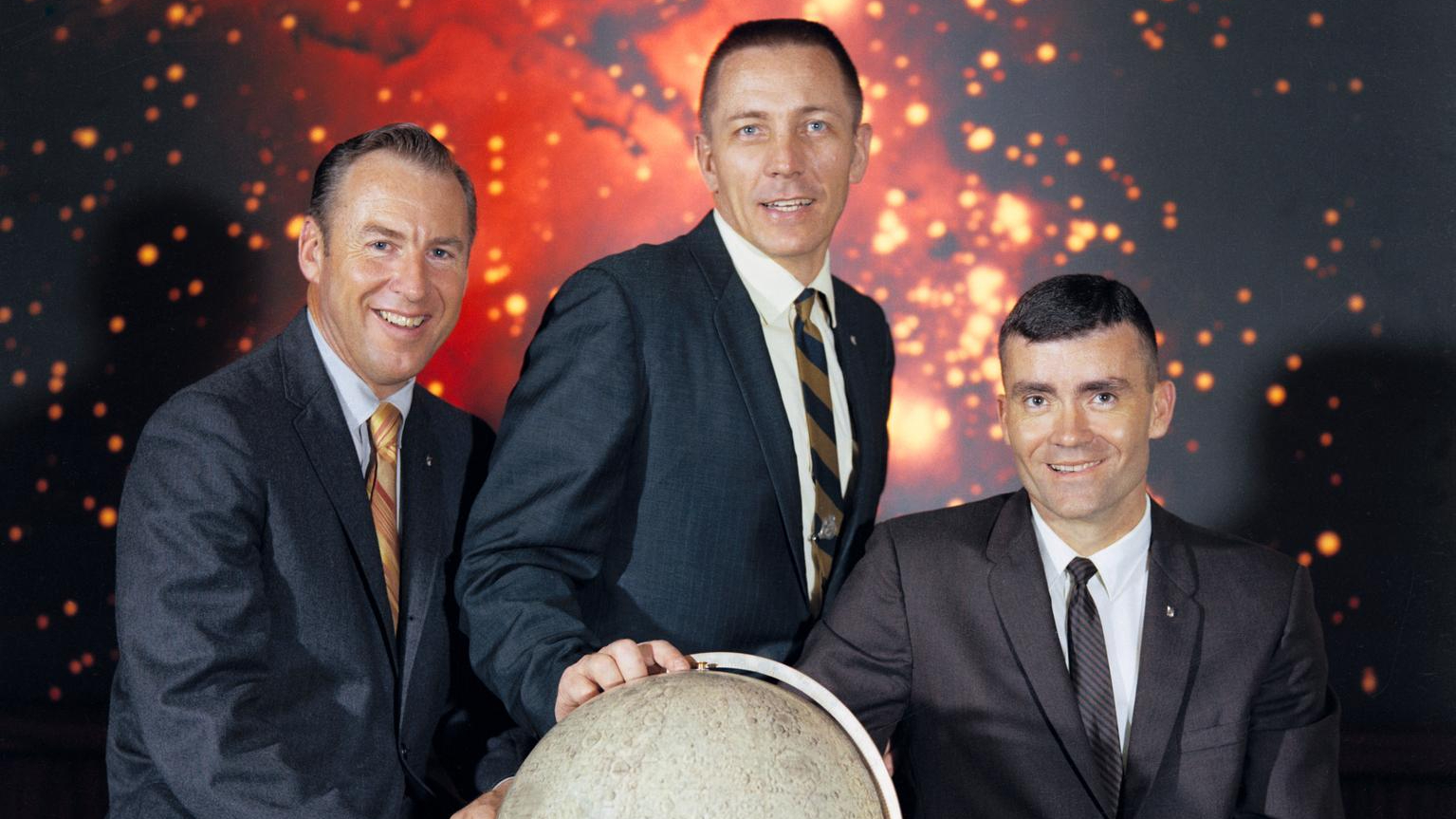
Apollo 13: "Houston, we've had a trouble"
Apollo 13 launched on April 11, 1970. The Apollo spacecraft was made up of ii independent spacecraft joined by a tunnel: orbiter Odyssey, and lander Aquarius. The crew lived in Odyssey on the journey to the moon.
On the evening of April xiii, when the crew was nearly 322,000 kilometers (200,000 miles) from Earth and closing in on the moon, mission controller Sy Liebergot saw a depression-force per unit area alarm signal on a hydrogen tank in Odyssey.
The signal could have shown a problem, or could have indicated the hydrogen just needed to be resettled by heating and fanning the gas inside the tank. That procedure was chosen a "cryo stir", and was supposed to terminate the supercold gas from settling into layers.
Related: This stunning 4K video re-creates Apollo xiii's perilous trip around the moon
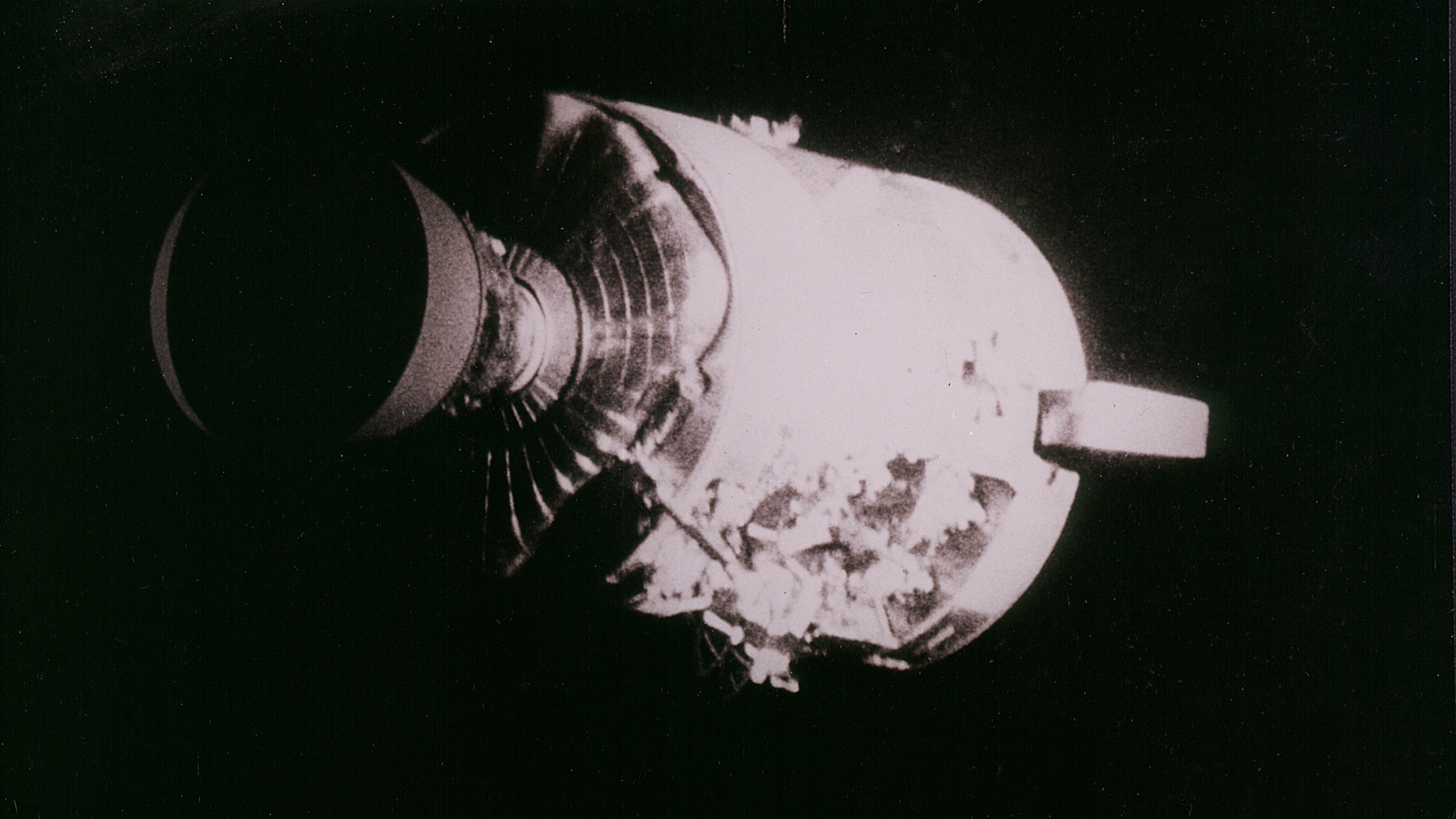
Swigert flipped the switch for the routine procedure. A moment later, the entire spacecraft shook. Alarm lights lit up in Odyssey and in Mission Control as oxygen pressure fell and power disappeared. The crew notified Mission Control, with Swigert famously saying, "Houston, nosotros've had a problem." (Note that the 1995 movie "Apollo xiii" took some creative license with the phrase, irresolute it to "Houston, we have a problem" and having the words come out of Apollo thirteen commander James Lovell's rima oris).
Much later, a NASA accident investigation board determined wires were exposed in the oxygen tank considering of a combination of manufacturing and testing errors before flight. That fateful night, a spark from an exposed wire in the oxygen tank acquired a fire, ripping apart one oxygen tank and damaging some other within the spacecraft.
Since oxygen fed Odyssey's fuel cells, power was reduced as well. The spacecraft's attitude control thrusters, sensing the venting oxygen, tried to stabilize the spacecraft through firing modest jets. The organization wasn't very successful given several of the jets were slammed shut by the explosion.
Fortunately for Apollo thirteen, the damaged Odyssey had a salubrious fill-in: Aquarius, which wasn't supposed to be turned on until the crew was close to landing on the moon. Haise and Lovell aimlessly worked to boot Aquarius upwards in less time than designed. Aquarius didn't have a heat shield to survive the drop back to Earth, then as Lovell and Haise got the lunar module up and running, Swigert remained in Odyssey to shut down its systems to conserve power for splashdown.
Apollo 13'due south cold, miserable trip home
The crew had to rest the challenge of getting domicile with the challenge of preserving ability on Aquarius. After they performed a crucial burn down to point the spacecraft back towards Globe, the crew powered downward every nonessential arrangement in the spacecraft.
Without a source of rut, cabin temperatures quickly dropped downward close to freezing. Some food became inedible. The coiffure besides rationed water to brand sure Aquarius — operating for longer than it was designed — would have enough liquid to absurd its hardware downwards. And Aquarius was pretty cramped as it was designed to concord two people, not 3.
On Globe, flight director Gene Kranz pulled his shift of controllers off regular rotation to focus on managing consumables like water and power. Other mission control teams helped the crew with its daily activities. Spacecraft manufacturers worked around the clock to support NASA and the crew.
It was a rough journey home. The entire spaceflight coiffure lost weight, and Haise developed a kidney infection. But the small vessel protected and carried the crew long enough to reach Earth's atmosphere.
In the hours earlier splashdown, the exhausted crew scrambled back over to the Odyssey powered it up. The craft had essentially been in a cold water soak for days, and could have shorted out, but thanks to safeguards put in identify later on the Apollo one disaster, at that place were no issues.
Lovell, Haise and Swigert safely splashed downward in the Pacific Ocean near Samoa, on April 17.
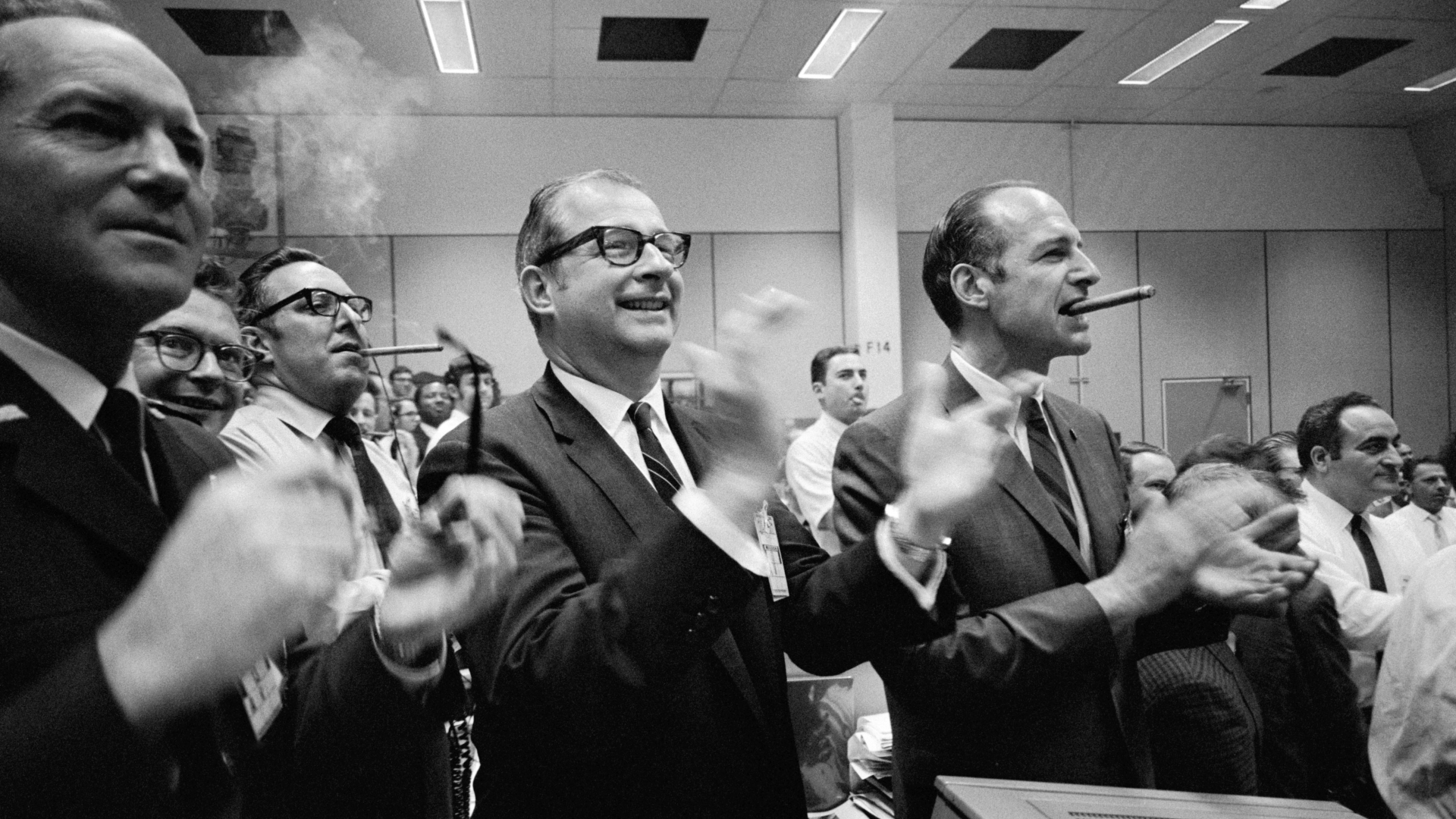
Apollo thirteen's legacy
Numerous design changes were fabricated to the Apollo service module and command module on subsequent missions in the Apollo program. Co-ordinate to former mission controller Sy Liebergot in an article by collectSPACE the changes included:
- Another cryo oxygen tank that could be isolated to merely supply the crew.
- Removing all cryo tank fans and wiring.
- Removing the thermostats from cryo tanks, and changing the type of heater tube.
- Calculation a 400-amp-60 minutes lunar module descent stage battery.
- Adding water storage numberless to the command module.
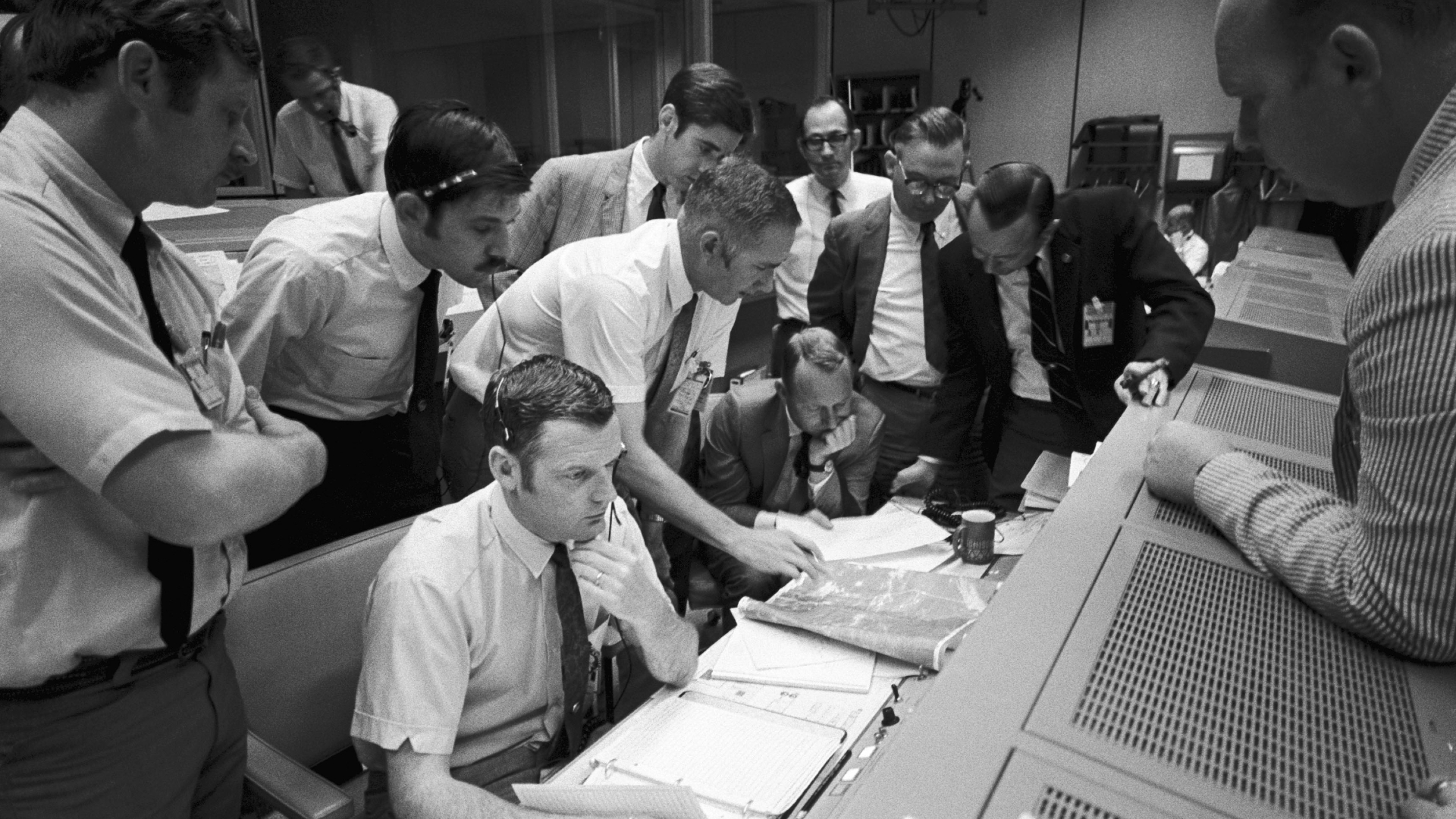
As for the astronauts, Haise was assigned to command the Apollo 19 moon mission. All the same, it and two other missions were canceled afterwards NASA's budget was cutting. He later piloted the infinite shuttle Enterprise during its test flights.
In 1982, Swigert was elected to Congress in his abode state of Colorado. Even so, during the campaign, he was diagnosed with bone cancer, and he died before he could be sworn in.
In 1994, Lovell and journalist Jeffrey Kluger co-wrote a book most Lovell'south spaceflight career that primarily focused on the events of the Apollo thirteen mission. The book, "Lost Moon: The Perilous Voyage of Apollo 13" (Houghton Mifflin, 1994), spurred the 1995 movie "Apollo thirteen," starring actor Tom Hanks. The movie won 2 Academy Awards and was filmed in cooperation with NASA.
The agency gave the movie coiffure access to the 1960s-era Mission Control in Houston to reconstruct the site as a gear up, and besides let the actor "astronauts" fly aboard NASA's Vomit Comet airplane to simulate weightlessness. Lovell made a cameo at the cease of the film equally the captain of the United statesSouthward. Iwo Jima; Marilyn Lovell and Gene Kranz made brusk appearances also, according to the Internet Movie Database.
Other biographical accounts of the Apollo 13 mission include Liebergot and David Harland'due south "Apollo EECOM: Journey of a Lifetime" (Collector's Guide Publishing, 2003) and Kranz'south "Failure Is Not An Option" (Simon & Schuster, 2000). Several non-fiction books have also examined Apollo thirteen, such as Andrew Chaikin's "A Human On The Moon" (Penguin Books, 1994), which included interviews with all of the surviving Apollo astronauts.
Additional resources
Read more about Apollo in this in-depth commodity from NASA. Explore the "successful failure" mission with this virtual exhibit from Space Center Houston. Discover other great stories from the Apollo missions with the Smithsonian Air and Space Museum.
Bibliography
"Space is hard - mission command later on Apollo 13". 17, April. 2020. ESA
Lovell, Jim, and Jeffrey Kluger. Apollo 13. Houghton Mifflin Harcourt, 2006.
Kauffman, James. "A successful failure: NASA's crisis communications regarding Apollo 13." Public Relations Review 27.4 (2001): 437-448.
NASA Apollo thirteen Mission Report, 1970.
Bring together our Infinite Forums to keep talking space on the latest missions, dark sky and more! And if you have a news tip, correction or comment, allow u.s.a. know at: community@space.com.
Source: https://www.space.com/17250-apollo-13-facts.html
0 Response to "Apollo 13 in Concert Benjamin Marian Schuster Performing Arts Center September 7"
Postar um comentário